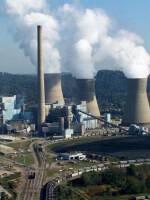
Net-zero is regarded as the most important strategy to fulfill the goal of the Paris Agreement, which is to limit the raise in global by less than 2.0 degrees Celsius above the pre-industrial average, with a target to not exceed 1.5 degrees of warming.
According to the World Resources Institute we are already at 1.1 degrees of warming and the scientific consensus is that reducing emissions enough to reach net-zero by 2050-2060 is the optimal way to solve the problem.
According to the Net-Zero Tracker, 151 of 198 countries and territories, and slightly fewer than half of the largest 2,000 companies in the world, have set voluntary targets to reach net-zero emissions over the coming three decades.
In 2023, we are at a crossroads on this journey. Although many organisations and governments are making the commitment, the overwhelming consensus is that serious action needs to be demonstrated before it is too late, and stakeholders are already growing impatient with empty targets and no action.
According to Statista, the transportation sector accounts for 20 per cent of global CO2 as of September 2023. Furthermore, the International Energy Agency estimates that trucks and buses account for 7 per cent of global CO2, international shipping by sea accounts for 2 per cent, and the aviation industry accounts for the same. It is certainly a significant and complex topic.
Having recently participated in my company’s leadership summit in Copenhagen, it was not a huge surprise that much of the focus of the event was on our company’s commitment to sustainability. We also heard from an esteemed panel of external speakers who shared their expertise about future trends for our industry and our customers, and again, sustainability was front and centre.
Additionally, some of our customers and suppliers shared their unique challenges and strategies when it comes to net-zero. My main takeaway from the event was that this topic is becoming more tangible and there are real-world solutions out there that will make a big difference in the years to come. It also must be true that the journey to net-zero in Vietnam will be even more challenging comparing to the journey in the Nordics.
Uniquely Vietnam
So, armed with a fresh perspective on the topic, I wondered what Vietnam could do to solve the existential problem of growth, cost efficiency, and sustainability, and untangle the unique challenges and opportunities in the transportation sector.
Vietnam’s economy is largely driven by international trade. International business leaders, journalists, and politicians all understand the great opportunity for Vietnam to grow in importance on the international business stage, especially now as business leaders look to develop a risk diversification strategy from China.
The extent to which Vietnam can attract positive attention and consequently more investors will continue to be determined by her capacity, productivity, cost base, and ease of doing business. Now and in the future, shareholders will also be demanding that commitments made about sustainability are delivered as well.
The journey towards substantial decreases in carbon emissions in the Vietnamese transport sectors is immensely complex. As I see it, the most effective solutions will be ones that confront the challenge and simultaneously make Vietnam more competitive on the road to net-zero. With that in mind, there are three areas where collaboration among businesses and with local authorities could be a game changer. These are efficiency, adoption of technology, and development of sustainable fuels in that order.
Success may be dependent on the level to which stakeholders can collaborate and participate. Those stakeholders could be from national, regional, or municipal governments as well as business associations and enterprises.
These strategies also need a focus. For example, tackling e-commerce and business-to-consumer deliveries could require a vastly different approach to full container transport to-and-from the factories and the ports. As our business is involved in the transportation of over 100,000TEU in and out of the ports in Vietnam, it is the focus of my thinking and research.
Efficiency
Living in Vietnam, it does not take long to realise the impact various trucks of all sizes and shapes have on the road infrastructure here. I have lived in Ho Chi Minh City for five years, and I am also an avid cyclist.Whether I am travelling with a group on Xa Lo Hanoi, crossing Phu My Bridge, or making my way out to the nearby provinces of Dong Nai or Binh Duong, it is obvious that the roads are almost always heavily congested with a fleet of trucks big and small.
Just before the May long weekend I was on a ride over Phu My Bridge, and observed a queue of heavy-duty trucks stuck in stop-and-go traffic for 15km on the route to Cat Lai Port. One of the observations I made was that about three trucks in 20 were towing an empty trailer, without a container. This means on that day about 15 per cent of the traffic were vehicles heading into port to pick up a container but were not delivering one.
Creating a more efficient transport network, where trucks are full, distances are reduced, and traffic congestion is eased would all help to reduce the level of emissions from this sector. I doubt there is a silver bullet that will solve the problem, but a combination of alternatives could make a real difference.
Everything from having stricter appointment schedules coupled with more automated and efficient entry and exit from the port precinct, as well as the development of additional capacity and hinterland barging terminals, developing industrial zones where access to rail or barge infrastructure is possible, and optimising transport routes, are but some of the ideas to explore.
To give one example: to travel from Hanoi to Haiphong port, you can see that the relatively new direct highway is sparsely used by container trucks. Operators avoid the toll fees and use the old infrastructure, leading to longer distances travelled and more traffic congestion on smaller roads. This situation inevitably leads to more CO2 emissions per delivery.
Technology
Electric vehicles (EVs) are widely touted as a game changer in the quest to reach net-zero. When it comes to heavy transport, the technologies are available for prime movers and trailers to operate on electric power.
The rub is that you need an extraordinary supply of renewable energy and infrastructure available to meet the power demands of this type of solution.
In Europe, I was exposed to solutions about how they are tackling this challenge. Factories, distribution centres, container depots, and ports are investing heavily in renewable energy infrastructure and battery storage to support both their on-site operation and to act as charging stations for trailers and trucks that are loading and unloading.
Especially in western and northern Europe, the renewable footprint is ramping up to support a transition to EV trucks. Here the situation is entirely different, and we already experienced a summer where power supply was stretched, and many residences and businesses had to turn to auxiliary power produced by diesel generators to keep operations going.
The reality is that using coal fire power plants to charge electric trucks is not a meaningful solution to the challenge. If the move to a future with substantial capacity in EV heavy-duty trucking is a leap too far, then perhaps a starting point is to improve emissions standards in place for new commercial vehicle registrations, and a serious approach to pushing operators to meet a higher standard when they renew existing registrations.
Businesses can also choose to prioritise newer and advanced vehicles for their transportation needs.
Sustainable fuels
Having carried out some research into the topic of sustainable fuels, I was impressed by the depth and breadth of considerations, and learned that the development of biofuels is already much further advanced than just a few years earlier.
An industry that primarily relied on food stocks to produce the fuel has now evolved to use cellulosic, algae-based, and waste-based biofuels. One of the constraints is high production costs, but with the right investment focus and scale, these alternatives may have a thriving future.
For Vietnam, this could be a critical industry of the future. For technologies that use algae, it comes with the extra benefit that it is also good at absorbing CO2 from the atmosphere. As for waste-based technologies, we may also help to solve the quandary of ever-expanding landfills.
My experience working and living in Vietnam is that this is a very optimistic and ambitious society. We are now living in a world where AI will almost certainly be the driving force behind an economic revolution. In the present and in the future, problems that seem insurmountable will have solutions that we can implement.
The solutions at the macro level and micro level will all be born out of the data we collect. It is already essential that our data collection is accelerated to capture meaningful information that we can leverage. Collecting the data is easier said than done, and my own industry has found it very challenging to produce reliable and universal data sets required.
Nevertheless, we have come to understand the importance of data as an asset, so we can accurately calculate the current baseline and then use the data to build and test new models for improvement. It is imperative that all levels of government and enterprises embrace this opportunity to map and capture the meaningful data sets that will be the key to unlocking a more sustainable future.
For DSV, this journey has already started as our data platform can evaluate a baseline CO2 for different transport modes, routes, and equipment and give our customers their CO2 footprint for each and every shipment. We will set ourselves the challenge to expand on this to offer better analytics and work with our customers locally to understand the baseline and the different solutions and levers available to improve the situation.
Eric Herding




